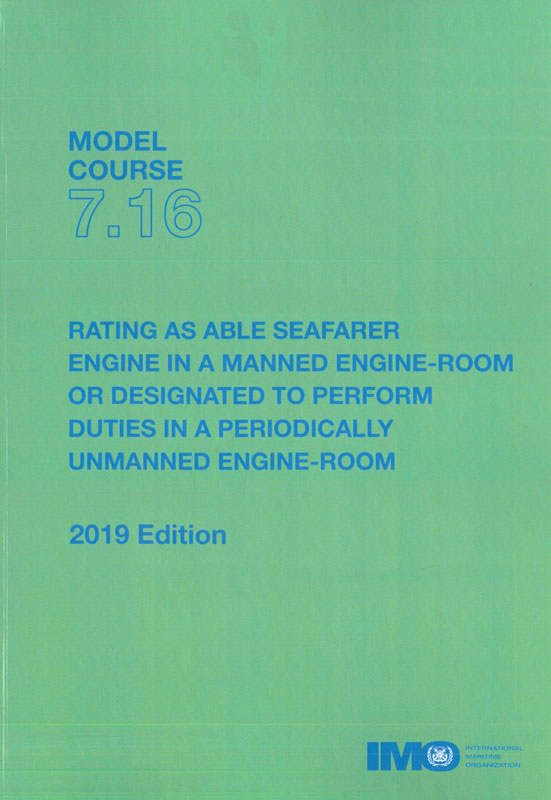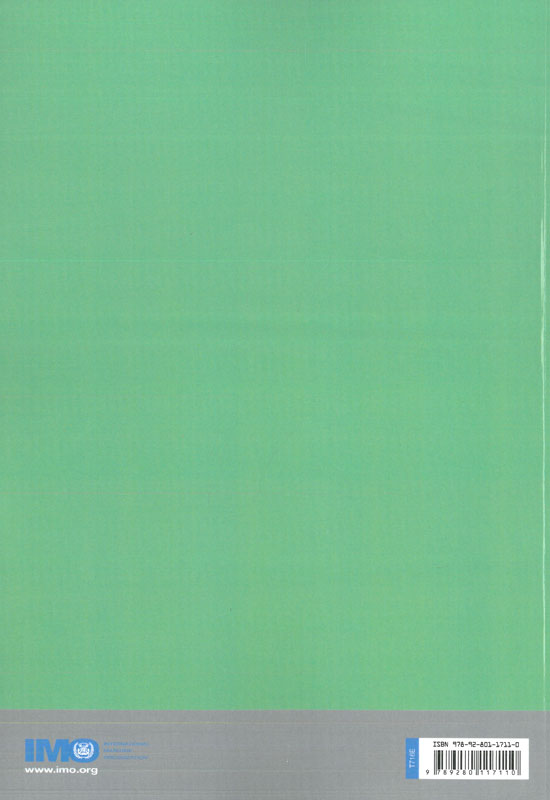Rating as able Seafarer Engine in a Manned Engine-room or Designated to Perform Duties in a Periodically Unmanned Engine-room. Model course 7.16
Издание полностью на английском языке
After the adoption of the International Convention on Standards of Training, Certification and Watchkeeping for Seafarers (STCW), 1978, the International Maritime Organization (IMO) recognized the need to provide guidance to maritime academies and training institutes to develop model training courses that are in compliance with STCW Convention requirements for certification of seafarers and other IMO instruments. Hence the IMO model course programme was introduced to provide guidance with a view to supporting maritime training providers and to assist maritime administrations responsible for the approval of STCW courses and maritime training.
The model course programme has been a long-time success and IMO has developed a number of model courses to help in effectively implementing the STCW Convention, the Knowledge, Understanding and Proficiency (KUP) requirements of the STCW Code and other IMO instruments. I believe that the key to this success is adherence to the requirements of the Conventions while, at the same time, these requirements are supplemented with industry best practices so that seafarers can be confident in carrying out the duties on board. The success of a course depends on the skills and competence of individual course facilitators. As part of the model courses, IMO has also developed guidance on the implementation of the model course, which may help those less experienced facilitators to make each course a success.
Whilst aiming to uniformly implement the requirements of the STCW Convention and Code and other IMO instruments, the model course programme is designed to provide flexibility so as to allow training providers to adjust the course programme to the needs of seafarers and trainees, based on their previous work experience and education.
I reiterate that IMO model courses are for the purpose of guidance only, and not to be regarded as an official interpretation of IMO instruments. They can be of assistance to administrations to facilitate the process of approval of STCW course programmes, and could be used by maritime academies and training providers in the development of courses that satisfy the requirements set out in the STCW Convention and STCW Code, and other IMO instruments.
This model course was validated by the IMO Sub-Committee on Human Element, Training and Watchkeeping at its fifth session (16 to 20 July 2018) and I wish training providers and seafarers well, and hope that the course makes the navigation of ships safer.
Contents
Foreword
Introduction
Purpose of the model courses
Use of the model course
Lesson plans
Presentation
Implementation
Textbooks and bibliography
Computer applications
Training and the STCW Convention
Validation
Part A: Course framework for all functions
Scope
Objectives
Entry standards
Course certificate
Course intake limitations
Staff requirements
Teaching aids
IMO references (R)
Bibliography (B)
Textbooks (T)
Part B: General outline for all functions
Timetable
Function 1: Marine engineering at the support level
Part B1: General outline
Part Cl: Detailed outline
Part D1: Instructor manual
Function 2: Electrical, electronic and control engineering at the support level
Part B2: General outline
Part C2: Detailed outline
Part D2: Instructor manual
Function 3: Maintenance and repair at the support level
Part B3: General outline
Part C3: Detailed outline
Part D3: Instructor manual
Function 4: Controlling the operation of the ship and care for persons on board
at the support level
Part B4: General outline
Part C4: Detailed outline
Part D4: Instructor manual
Part E: Evaluation and assessment
Initial/Diagnostic assessment
Formative assessment
Summative assessment
Evaluation for quality assurance
Assessment planning
Validity
Reliability
STCW Convention 1978, as amended
Evaluation of competence
Multiple choice questions
Compiling tests
Quality of test items
Use of rubrics
Scoring tests
Appendix I: Example lessons
Appendix II: Sample assessment
Appendix III: Guidance on the implementation of IMO model courses



